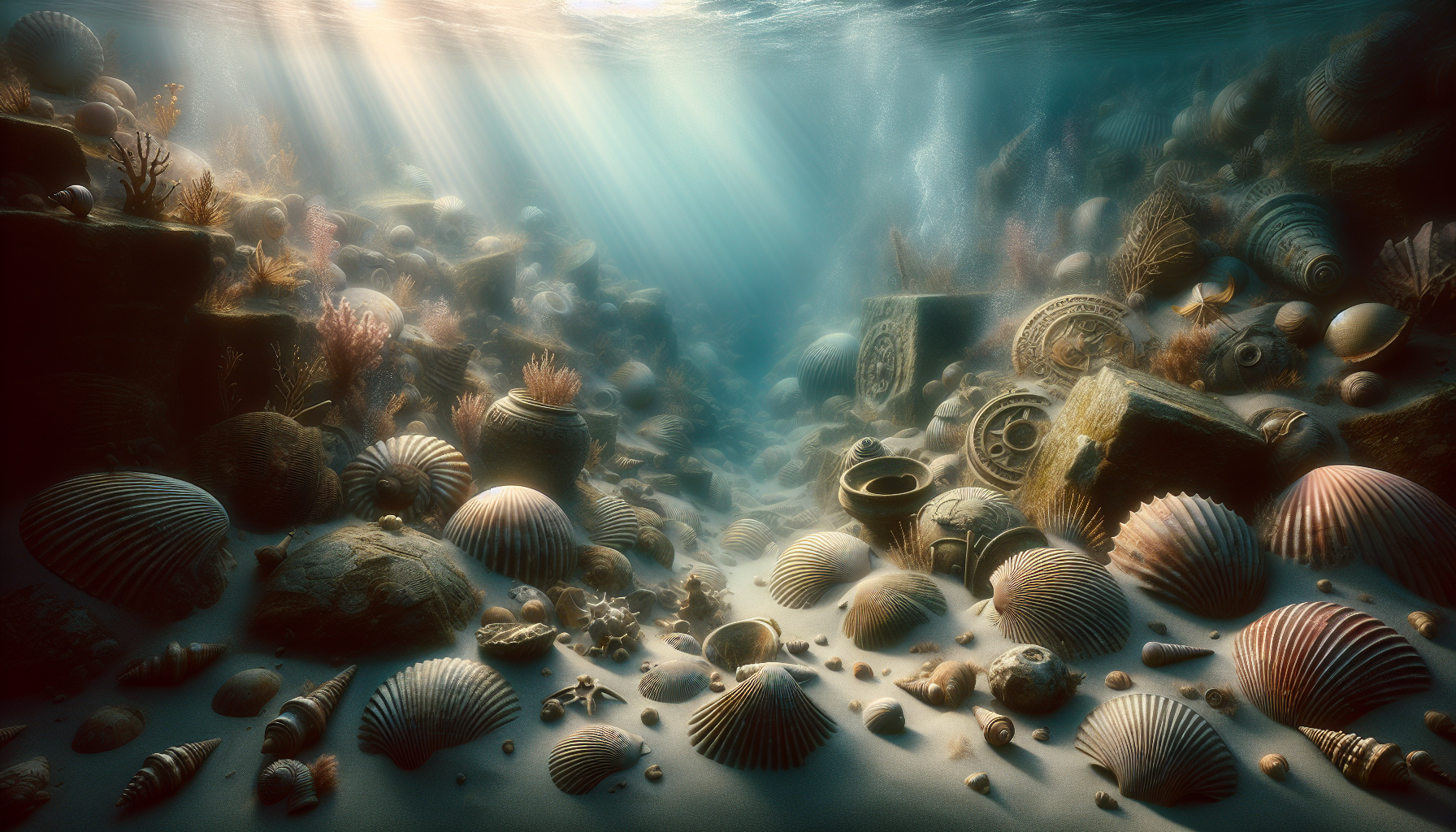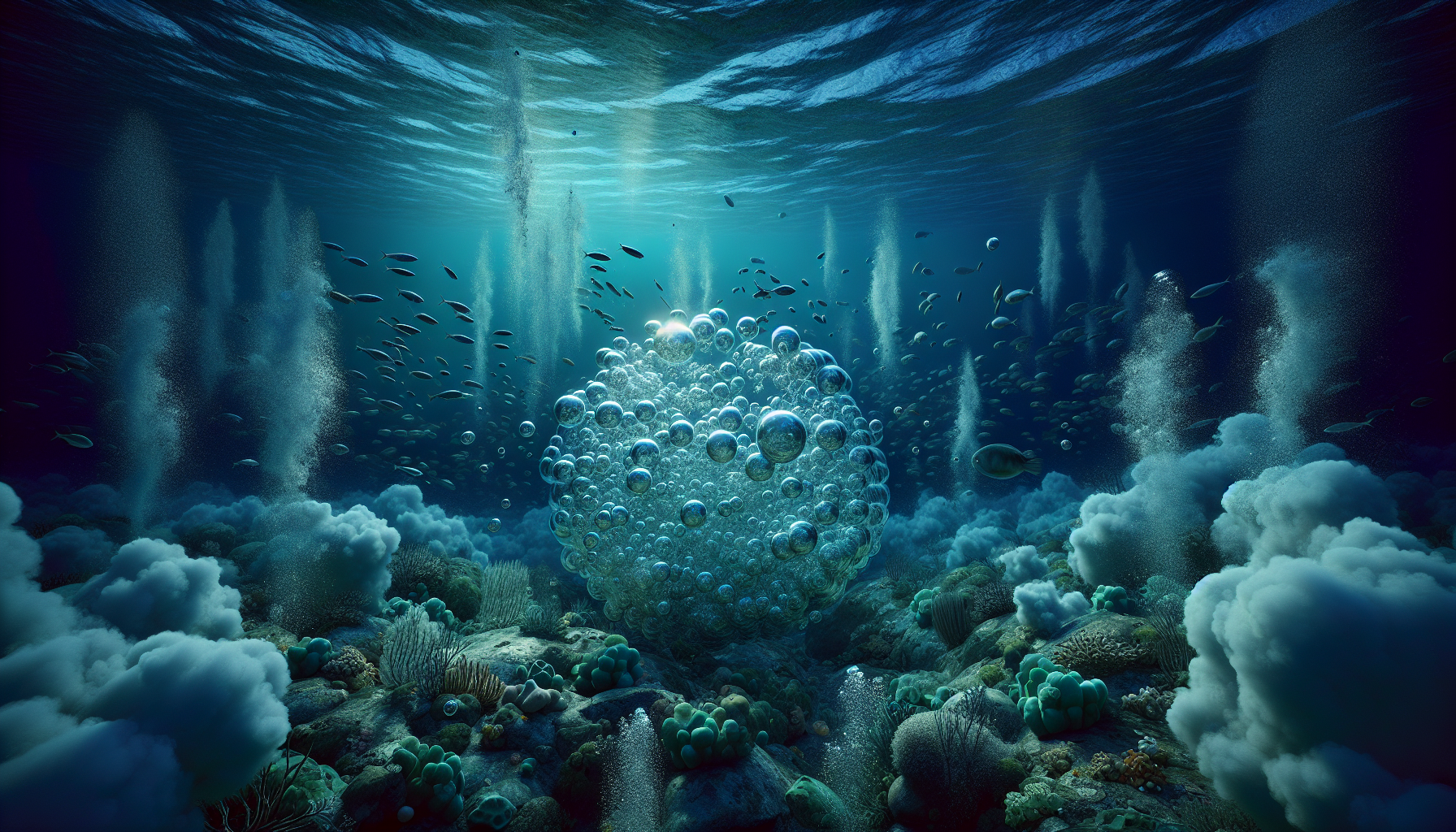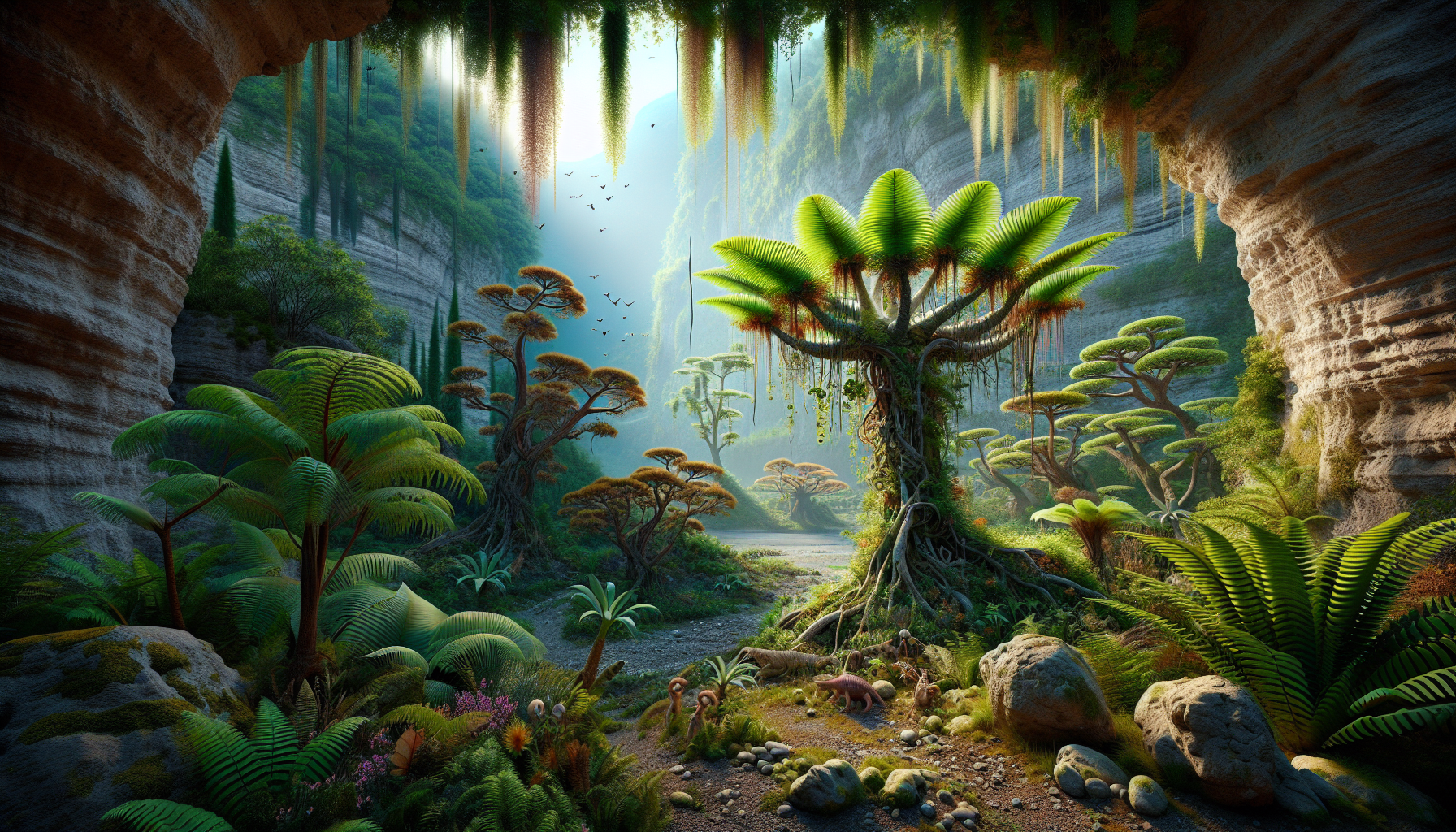In the vast tapestry of Earth’s history, there are stories written not in ink, but in the delicate curves and spirals of ancient shells. These seemingly simple remnants of bygone eras hold secrets of a world long past, whispering tales of oceans that once teemed with life but have since vanished beneath the sands of time. As we embark on this journey of discovery, we invite you to dive deep into the past, where the shells of ancient marine life act as time capsules, preserving invaluable information about the environmental conditions, climate shifts, and even the cataclysmic events that shaped our planet’s geological history. 🌊
The exploration of ancient shells is akin to opening a window into a prehistoric realm, offering glimpses of ecosystems that thrived millions of years ago. These fascinating discoveries are not merely scientific curiosities; they are crucial to understanding the dynamics of Earth’s past, which, in turn, can illuminate our understanding of present and future changes. In this article, we will delve into the extraordinary world of paleontology and geology, unraveling how shells can reveal the mysteries of lost seas and the astonishing stories they hold. We will explore the meticulous processes scientists employ to analyze these fossils, the groundbreaking discoveries that have redefined our understanding of Earth’s history, and the implications these findings have for modern science and environmental studies.
Join us as we embark on an odyssey through time, unveiling the secrets locked within these ancient marine relics. We will journey across different epochs, examining the climatic and environmental transformations recorded in shell fossils. From the warm, shallow seas that once covered much of the Earth’s surface to the dramatic shifts in ocean currents and sea levels, each shell is a chapter in the grand narrative of our planet’s evolution. By the end of this exploration, you will not only gain a deeper appreciation for these natural wonders but also understand how their stories are integral to piecing together the complex puzzle of Earth’s past. So, ready your imagination and prepare to be amazed by the silent yet eloquent testimonies of shells that reveal lost seas. 🐚
The Enigmatic World of Ancient Shells
Shells have always captivated human imagination, serving as more than just pretty sea trinkets. They are silent witnesses to the Earth’s geological and biological history, revealing stories of ancient seas and forgotten ecosystems. The fossilized remains of these marine organisms offer clues about past climates, sea levels, and the biodiversity of bygone eras. By studying these ancient shells, scientists and historians alike can dive into a narrative that spans millions of years, uncovering secrets hidden beneath layers of sediment and time.
These calcified remains are crucial for understanding the history of life on Earth. Each shell is like a time capsule, preserving the conditions of its time. They contain chemical signatures that reveal ocean temperatures, salinity levels, and even atmospheric conditions. Through isotopic analysis, for instance, scientists can determine shifts in climate and correlate these changes with major events in Earth’s history, such as mass extinctions or the rise of new species. This data provides invaluable insights into how life evolved and adapted to changing environments.
Moreover, the diversity of shells speaks to the complexity of marine ecosystems. From the intricate patterns of ammonites to the robust structures of brachiopods, these ancient organisms display a wide range of adaptations. By examining the morphology and distribution of shells across different geological layers, researchers can reconstruct ancient habitats and understand the ecological dynamics that once prevailed. These findings have far-reaching implications, not only for paleontology but also for modern conservation efforts, as they highlight the importance of biodiversity and the resilience of life.
Discoveries Under the Ocean Floor
The ocean floor is a vast repository of ancient shells, often buried under layers of sediment. Advances in technology have enabled scientists to explore these depths, uncovering a treasure trove of fossilized shells that offer a window into the past. Using submersibles, remotely operated vehicles (ROVs), and sonar mapping, researchers can access previously unreachable areas, collecting samples that shed light on Earth’s history.
One of the most significant discoveries in recent years has been the identification of ancient sea beds, where clusters of fossilized shells provide evidence of once-thriving ecosystems. These sites, often located in deep-sea trenches or beneath polar ice caps, are critical for understanding how marine life adapted to past climatic conditions. By analyzing the composition and distribution of shells in these areas, scientists can draw connections between historical sea levels and contemporary changes in ocean currents and temperatures.
The implications of these discoveries are profound. They not only expand our knowledge of Earth’s history but also inform our understanding of current environmental challenges. As we face the consequences of climate change, studying the past provides a valuable context for predicting future trends and developing strategies for mitigation. The lessons learned from ancient shells highlight the resilience of marine life, as well as the vulnerabilities that must be addressed to ensure the survival of our oceans.
Table: Comparison of Ancient and Modern Shells
| Feature | Ancient Shells | Modern Shells |
|---|---|---|
| Composition | Primarily calcium carbonate, often fossilized | Calcium carbonate, some contain aragonite or calcite |
| Diversity | Extremely diverse in form and function | Diverse, with significant variations among species |
| Habitat | Varied, including deep-sea, reefs, and freshwater | Wide range of marine and some freshwater environments |
Check out the comparison above to better understand the differences between ancient and modern shells.
Reconstructing Lost Seas: Methods and Technologies
Reconstructing ancient seas involves a multidisciplinary approach, combining geology, biology, chemistry, and technology. One of the primary methods used is stratigraphy, which examines the layering of rock and sediment to interpret the sequence of historical events. Each layer contains distinct fossils and minerals, providing a timeline of environmental changes. By correlating these findings with radiometric dating, scientists can establish a chronological framework for past marine conditions.
Isotope analysis is another vital technique, offering insights into the chemical composition of ancient shells. By measuring isotopic ratios, researchers can infer ocean temperatures, salinity, and even the diets of marine organisms. This information helps reconstruct past climates and oceanographic conditions, painting a detailed picture of ancient marine ecosystems.
Technological advancements have revolutionized the field of paleoceanography. High-resolution imaging and 3D modeling allow scientists to visualize ancient shells in unprecedented detail, revealing intricate patterns and structures. These tools facilitate the identification of new species and the analysis of evolutionary trends over time. Furthermore, computer simulations and models are used to recreate ancient ocean currents and climate systems, providing a dynamic understanding of how these factors influenced marine life.
Watch This Video on Ancient Seas
For a visual exploration of these fascinating discoveries, watch the video “Secrets of the Lost Seas” on the National Geographic Channel. It provides an engaging overview of the methodologies used to uncover these ancient mysteries.
- Understand the importance of isotope analysis in reconstructing past climates.
- Explore how modern technology is transforming the study of ancient shells.
- Discover the link between ancient and current marine ecosystems.
Engage with the video content to deepen your understanding of these processes and their significance.

Conclusion
Conclusion: Uncovering Ancient Mysteries through Shells
In conclusion, the exploration of ancient mysteries through the study of shells has unlocked a treasure trove of knowledge about our planet’s past. Throughout this article, we delved into the fascinating world of paleontology and archaeology, focusing on how shells serve as critical evidence for reconstructing lost seas and ecosystems that once thrived on Earth. By examining the unique structures and compositions of these shells, scientists have been able to piece together narratives of environmental changes, migration patterns, and even climatic shifts over millions of years.
One of the key points we explored is the role of shells as natural archives. Their layered compositions act like pages in a book, each layer capturing a snapshot of the Earth’s historical climate and environmental conditions. This information is invaluable for scientists seeking to understand the historical context of today’s climate change challenges. The study of shells offers insights into how marine life and ecosystems responded to past climate variations, providing a long-term perspective that can inform current environmental strategies.
Moreover, we highlighted the interdisciplinary approach required in this field. By bringing together experts in geology, biology, chemistry, and archaeology, the study of ancient shells exemplifies how collaborative efforts can lead to groundbreaking discoveries. This approach not only enriches our understanding of history but also enhances our ability to predict and mitigate future environmental impacts.
The stories told by these ancient shells also underscore the interconnectedness of life on Earth. They remind us of the delicate balance that exists within ecosystems and the profound impacts that environmental changes can have on biodiversity. By studying these remnants of the past, we gain a deeper appreciation for the resilience of life and the need to protect it for future generations.
The importance of these discoveries extends beyond the scientific community. By uncovering ancient mysteries, we enrich our cultural heritage and expand our understanding of human history. Ancient shells serve as a bridge connecting us to our ancestors, providing insights into how early civilizations adapted to their environments. This knowledge has the potential to inspire and inform modern-day societies as we face our own environmental challenges.
As we reflect on the insights gained from studying ancient shells, it is crucial to acknowledge the ongoing nature of this research. New technologies and methodologies continue to emerge, allowing scientists to uncover even more details about the Earth’s past. The exploration of ancient mysteries is far from over, and each discovery adds another piece to the complex puzzle of our planet’s history.
In light of these revelations, I encourage you, the reader, to take action. Whether it’s sharing this article with others, engaging in discussions about the implications of these findings, or applying this knowledge to your own life and community, your involvement is essential. The mysteries of the past hold valuable lessons for the present and future, and together, we can foster a greater appreciation for the natural world and our place within it.
As we conclude this journey into the depths of time, let us be inspired by the resilience and beauty of life on Earth. The shells that once housed ancient marine creatures now tell stories of survival, adaptation, and transformation. Let these stories motivate us to protect and preserve our planet for future generations, ensuring that the wonders of our world continue to inspire and enlighten those who come after us. 🌊🔍
For further exploration, consider visiting reputable sources such as Smithsonian Ocean, National Geographic, and Scientific American to deepen your understanding and keep up with the latest discoveries in the field.
By engaging with this knowledge and sharing it with others, you contribute to a global effort to uncover the secrets of our planet’s past and secure a sustainable future. Let’s dive into these mysteries together and cherish the journey of discovery that awaits us all.
Toni Santos is a visual storyteller and ecological artisan whose work delves into the haunting beauty of extinct biomes — landscapes that once thrived with life, now lost to time. Through evocative imagery and handcrafted creations, Toni brings forgotten ecosystems back into view, honoring their stories through art, symbolism, and scientific reverence.
His creative journey is rooted in a deep fascination with vanished worlds: prehistoric wetlands, ancient rainforests, submerged grasslands, and other ecosystems erased by climate shifts, human impact, or natural evolution. Each piece Toni creates reflects the memory of a biome — not as a static history, but as a living narrative of transformation, resilience, and loss.
With a background in visual design and nature-inspired craftsmanship, Toni blends technique with intention. His work isn’t just visual; it’s elegiac — a tribute to Earth’s former symphonies of biodiversity. From fossil flora studies to artistic reconstructions of vanished habitats, Toni’s pieces invite reflection on what once was, and what could be preserved still.
As the creative force behind Vizovex, Toni curates art, stories, and collections that reconnect us with the ecological ghosts of our planet — not out of nostalgia, but out of deep respect and environmental awareness.
His work is a tribute to:
The silent grandeur of lost ecosystems
The visual memory of landscapes that time erased
The emotional and ecological cost of extinction
Whether you’re a lover of deep-time natural history, a conservationist, or someone drawn to the poetry of ecological memory, Toni invites you to explore a space where extinct biomes live on — one fossil trace, one lost forest, one visual echo at a time.





